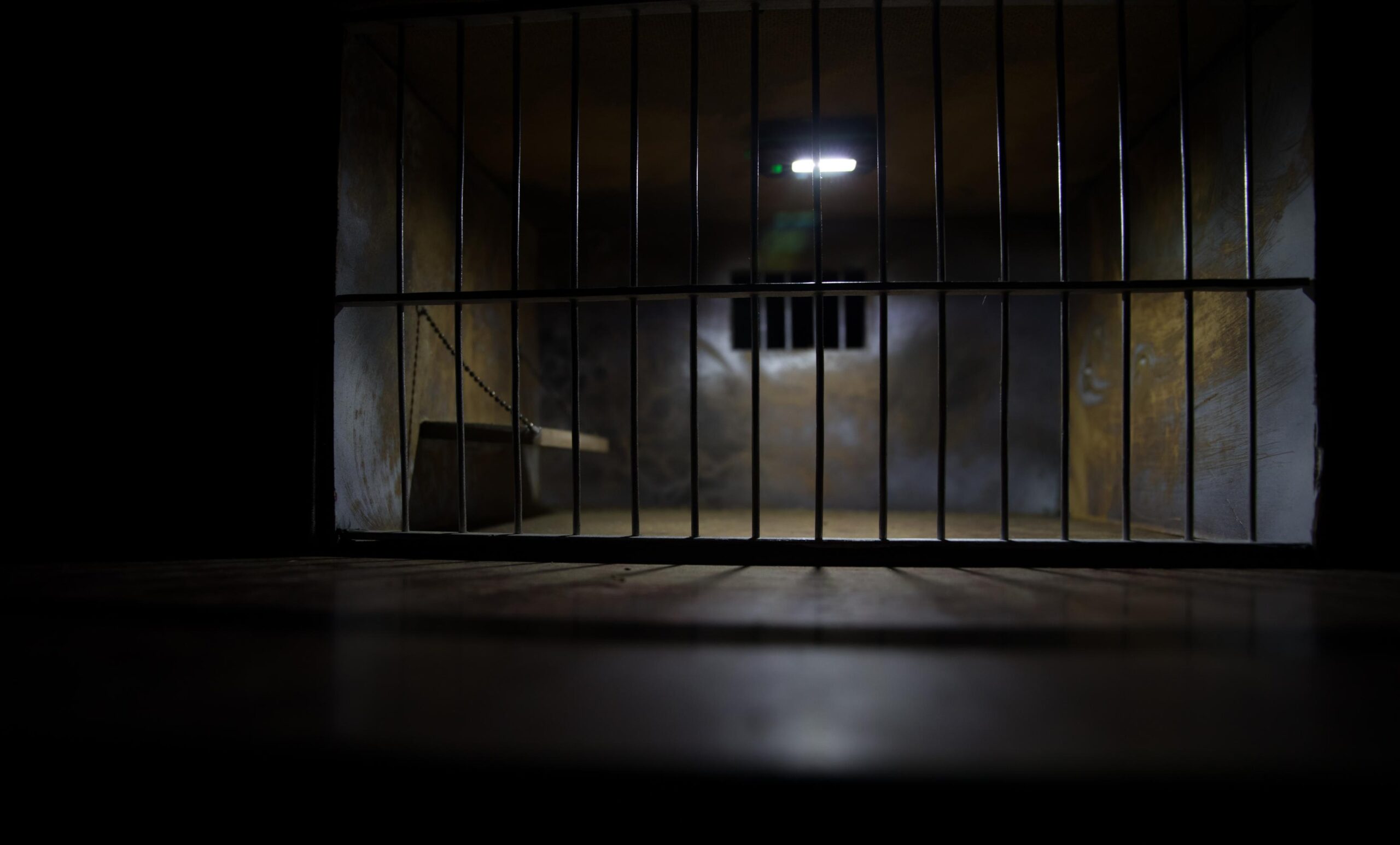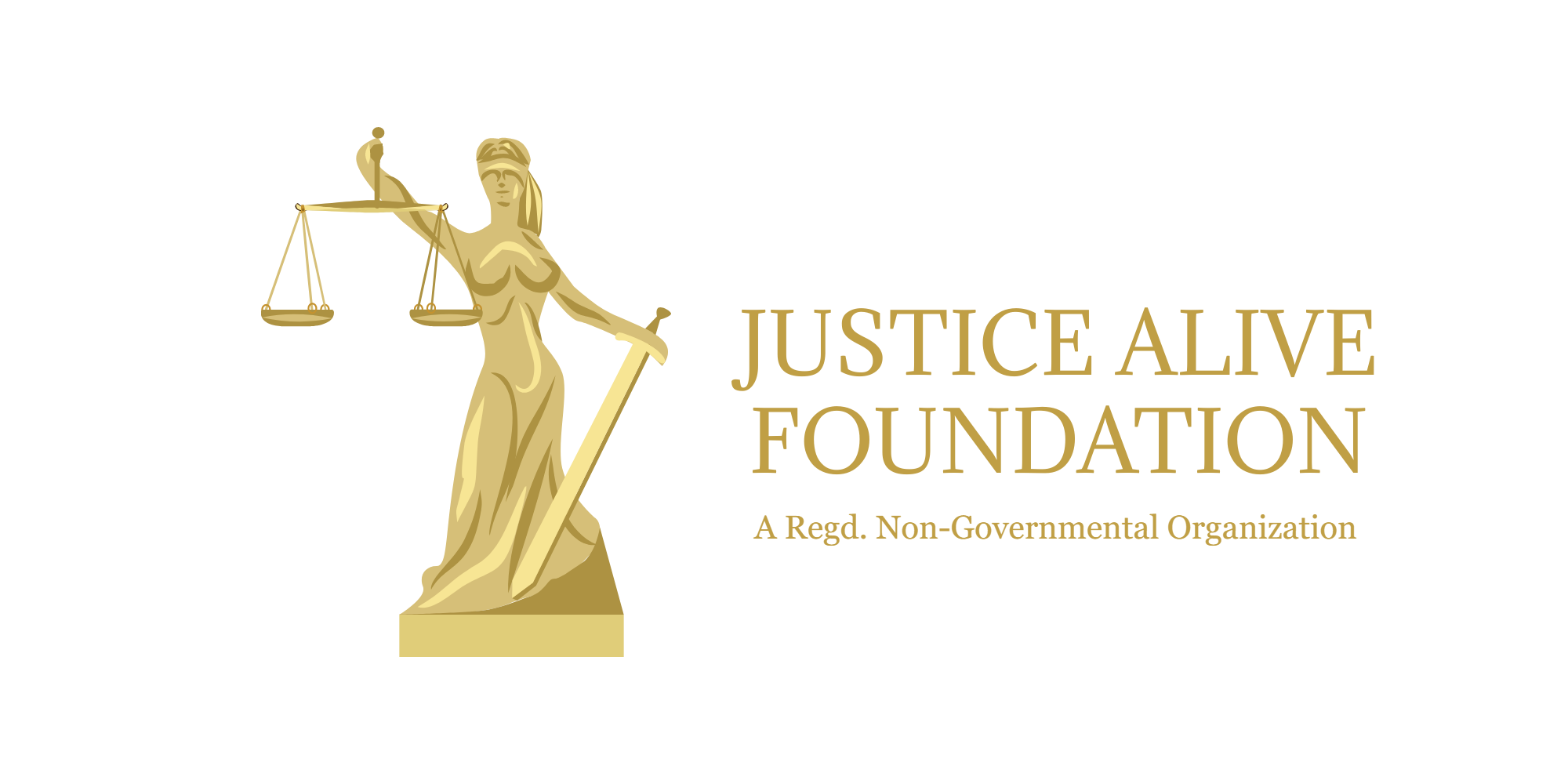
Undertrials: A result of inadequacy in the prosecution system?
This article has been written by Ms. Nivedita Deepu.
Introduction
Behind prison walls, the fundamental right to life guaranteed by the Constitution remains intact. Despite this, the treatment of inmates in India is beset by a number of issues, such as the disproportionate arrest and remand of impoverished undertrials to judicial custody. (According to the 78th Report of Law Commission, an ‘undertrial’ is defined as a person who is in judicial custody on remand during an investigation). However, some have to bear with the struggles of detainment as they are incapable of obtaining bail due to a lack of financial resources. Under-trial detainees are typically accused individuals whose bail was denied for a charge that is not subject to bail or whose bail was granted for a charge that is subject to bail because it is their legal right, but they have not provided the necessary sureties and bail bond. It also applies to the defendant who was given a bond for an offense for which bail was not required but failed to follow the guidelines established by law enforcement officials.
A collective failure on the part of the state is the cause of India’s undertrial prisoner troubles. These are stigmatized individuals whose voices are frequently silenced, their appeals infrequently heard, and their lives spent in musty, overcrowded jails, not because of the crimes they have done but rather because of the slow and ineffective justice system. Many thousands of these detainees have not committed serious crimes such as murder or rape and are merely there because they have been charged with a crime that has not yet been proven in court. According to Article 436-A of the Code of Criminal Procedure, 1973, an undertrial prisoner who has been kept for half the amount of time specified for the offense and is not charged with a crime carrying a life sentence or the death penalty should be freed. However, many wind up doing years in prison; in fact, several of them serve more than the maximum sentence allowed for the offense they are charged with. Undertrials are held in custody (detainees awaiting trial are held by judges, not by the police) to guarantee a fair trial and prevent them from having the ability to sway the witnesses. The problem, however, and the primary reason behind the high number of detainees awaiting trial, is due to the delay in case trials. Before the trial court even begins hearing their cases, many of them spend years together in jail, and most of the time, the judges watch these prolonged hearings with blank stares. How can we help these prisoners when the very system whose sole responsibility is to provide justice turns its back on them?
The Plight of the Prisoners
Prisons tend to be dangerous environments due to the prevalence of extrajudicial torture, physical abuse, and interpersonal violence. As the guardians, the jail authorities have a duty to guarantee the prisoners a life of security and dignity and to shield them from any aggression, whether it comes from other prisoners or from jail staff. The absence of criminal penalties for actions taken by prison officials may cause detainees to be treated in a negligent manner, which in turn can lead to injuries or, in the worst-case scenario, death. Jail life is characterized by overcrowding, a lack of basic comforts, limited resources, and subpar medical care. These problems are made worse by health issues and the rapid spreading of infectious diseases caused due to overcrowding. The very least that can be expected of the jail administration under such deplorable circumstances is to ensure that prisoners’ rights to life and freedom from torture are respected. ‘The most important problem is the denial of legal
assistance to prisoners that has led to chronic overcrowding, unacceptable overstretching of facilities, and consequent terrible conditions in which mostly unconvicted persons must spend an unjustifiably long duration incarcerated without proof of guilt.
These problems are not intractable or inevitable. They are to a large extent the result of institutional apathy, neglect of statutory duties, regulations and norms and, indeed, disregard of the law and directions of the Supreme Court and high court.’ [1]
As if this wasn’t enough, Prison authorities have a tendency to avoid informing prisoners about their rights and will deny them free legal aid. Prison officials claim that every undertrial prisoner is provided with free legal aid or a ‘sarkari visa’, but many are still without such assistance. Only some prisons have printed application forms for seeking legal aid, and information about it is typically passed on by older hands. It takes time to explain the system of free legal aid to newcomers, as many do not immediately grasp the concept or believe they are entitled to effective representation. There is no formal induction system for new prisoners, and there is no systematic way to provide new entrants with information about the availability of free legal aid as a routine matter.[2]
NCRB Data
Upon looking through the data provided by the National Crime Records Bureau’s official website, you will come to the obvious conclusion that there is a grossly inadequate number of judges and prosecutors.
The National Crime Report Bureau (NCRB) reports that during the previous ten years, the number of inmates awaiting trial has steadily increased, reaching a peak in 2021.
More than 0.2 million undertrial inmates in India’s criminal court system were left uncared for extended periods of time and frequently went above the maximum term allowed for the offense they had committed. According to data, two out of every three inmates on trial are members of the SC, ST, or OBC castes. More than a quarter of undertrial prisoners were illiterate, and two out of every five had educations that did not surpass 10th grade. Approximately 68% of all jail convicts in 2020 were either illiterate or dropouts from school, making up 76% of all inmates in the nation who were awaiting trial. [3]
Legal Framework Surrounding Under-Trial Prisoners in India.
- The Indian Constitution’s Article 21 guarantees fundamental rights, including the right to life and the right to personal liberty, are part of the legal framework that surrounds these prisoners. One of the most important parts of the legal system is the right to a prompt trial.
- Section 436 of the Code of Criminal Procedure (CrPC) states that inmates who are awaiting trial and have served half of the maximum sentence they would receive if found guilty can be freed on bail. ‘Section 436 specifies that if an undertrial arrested in minor offences continues to languish in prison for more than a week after his bail order has been passed, he/she can be assumed to be indigent and therefore shall be released on a pr Bond by the trial court.’ [4]
- In order to give impoverished undertrial inmates who cannot afford legal representation legal aid and support, the Legal Services Authorities Act of 1987 established the National Legal Services Authority (NALSA) and State Legal Services Authorities (SLSA). The Supreme Court has directed the National Legal Services Authorities (NALSA) to coordinate with state authorities and the home ministry to establish undertrial review committees, comprising the District Judge, the District Magistrate and the Superintendent of Police in all districts of the country.[5]
- Prisoners awaiting trial are safeguarded against torture and other harsh treatment under the Indian Penal Code and international human rights accords. Inspite of this there are still alegations of abuse and custodial violence. Under the CrPC, detainees awaiting trial are required to appear before a magistrate within twenty-four hours of their apprehension. The magistrate then considers the reasons for the imprisonment and determines whether to grant bail or continue custody.
- The Juvenile Justice Act, which prioritizes the protection and rehabilitation of young offenders awaiting trial, sets rules for how these inmates are treated. Juvenile Justice (Care and Protection of youngsters) Act, 2015 states that minors who are in trouble with the law cannot be detained in adult correctional facilities until they turn 21. However, some innocent youngsters are imprisoned alongside adult offenders.
- Inmates awaiting trial possess an inalienable right to knowledge regarding their accusations, legal safeguards, and the status of their cases. This includes the right to know the circumstances surrounding their apprehension and confinement.
- Undertrials in the Indian prisons are kept in the same jail with convicted prisoners. However, it has now been made compulsory for prison officers to provide separate accommodation for them. The Model Prison Manual advocates that no convicted prisoner shall be kept with undertrials, or be allowed to have contact with them.[6]
- Despite the draconian provisions of law, in recent times there have been changes in the treatment of prisoners. These have been inspired by the discourse on rights, initiated by the Declaration of Human Rights in 1948, and adopted by the Constitution of India in 1950 in the form of Fundamental rights.[7]
Despite all these provisions, issues with the Indian criminal justice system continue to exist, including overcrowding, poor legal counsel, and trial delays. Sustaining the rights of inmates awaiting trial and ensuring the efficient operation of the legal system are necessary to address these issues.
What parts of the Constitution protect Undertrials?
- Article 39A
In order to guarantee that every citizen has access to the legal system, Article 39A requires the State to offer free legal assistance. “Such legal aid” is defined as that which the state may provide in accordance with the Legal Services Authorities Act of 1987 or any other currently enacted legislation. This covers not just legal counsel in court but also support throughout the course of the case, such as during the investigative and pre-trial phases. The idea of equal opportunity is emphasized in Article 39A in relation to justice. It means that everyone should have an equal opportunity to seek and obtain justice through the legal system, and that the legal system should not discriminate against people based on their financial situation. This essay emphasizes how crucial it is to guarantee that everyone, regardless of social or economic status, has access to the legal system. It acknowledges that no one should be denied justice just because they are unable to afford legal counsel or to use the court system. It’s crucial to remember that Article 39A is a directive principle of state policy, meaning that private persons cannot enforce it in court. Nonetheless, it encourages legislators and the government to pass laws and policies that uphold these values by acting as a guide.
- Article 21
“No person shall be deprived of his life or personal liberty except in accordance with a procedure established by law,” states Article 21. No one may be arbitrarily detained or imprisoned, even inmates, according to Article 21. It limits the state’s ability to deny someone their freedom without following the proper legal procedures. Torture and other cruel, inhuman, or humiliating treatment of prisoners are forbidden by Article 21. Both convicted criminals and detainees awaiting trial are covered by this safeguard, which guarantees their bodily and emotional welfare while confined. Article 21 is important in cases involving the death sentence as well. It requires that a number of requirements, including fairness, the absence of arbitrariness, and adherence to due process, be met before the death sentence can be applied.
- State Subject List
“Prisons/persons detained therein” is defined as a State subject in the Seventh Schedule of the Indian Constitution as Entry 4 of List II. The respective State Governments are in charge of managing and administering the prisons.
Methods to reform the Prison system
The Justice Amitava Roy Committee was established by the Supreme Court to improve the penal system. A quick trial to relieve prison overcrowding, a lawyer to prisoner ratio of at least one for every thirty inmates, special fast-track courts for minor offenses, and the release of accused individuals on personal recognition bonds are among the recommendations. Plea bargaining should be encouraged and cases involving witnesses should not be adjourned. Legal aid and a daily complimentary phone call to family members should be extended to convicts. Prisoners should be given instruction and vocational skills. Courts may be encouraged to release convicts on probation during pre-trial proceedings or following trial, and ICT use should be utilized throughout trial. The Law Commission of India suggested in 2017 that undertrials serving up to seven years in prison for having served out a third of their maximum sentence be freed on bond.
Judgements
- In D. Upadhyayv. State of AP, the Supreme Court held that in R.D Upadhyay’s case stated that a child should not be treated as an undertrial/convict while in jail with his/her mother. Such a child is entitled to food, shelter, medical care, clothing, education, and recreational facilities as a matter of right. The Court also proclaimed that the jail environment is not congenial for the growth of a child. So, reasonable steps must be taken by the government’s various organs to protect children living in Indian jails. [8]
- The Supreme Court of India ruled in Sanjay Chandra v. CBI (2011) that “the Court has exclusive power in granting or refusing bail.” The case’s circumstances have a significant impact on whether the grant or denial is made. But society’s feelings against the guilty shouldn’t be the primary reason a person’s right to bail should be denied. In a criminal proceeding, the main purposes of bail are to release the accused from jail, absolve the state of the burden of keeping him in custody while he awaits trial, and maintain the accused in the court’s constructive custody—whether the accused is found guilty or not—so that he can submit to the court’s jurisdiction and appear when the court calls for it. [9]
Conclusion
We can conclude that certain steps need to be taken up such as that undertrial prisoners should be housed in separate institutions from convicted ones, with proper classification to prevent the conversion of first-time offenders into hard-core criminals. Separate courts for certain offences should be established, and institutions should be close to courts. Remands should be limited for the convenience of authorities, and digitalization of criminal case handling should be implemented. We have a long road ahead but with the help of new technology perhaps tackling these issues might get a tad bit easier.
References
Joy, C., & Singh, A. (2017). Life under Threat in Jail. Economic and Political Weekly, 52(41), 4–5. http://www.jstor.org/stable/26698394
[1] [2]Murali, K. (2006). Institutional Apathy towards Undertrial Prisoners. Economic and Political Weekly, 41(37), 3936–3938. http://www.jstor.org/stable/4418697
Re – Inhuman Conditions in 1382 Prisons, AIR 2016 SC 993
Chandra, A. Medarametla, K. (2017) Bail and Incarceration: The State of Undertrial Prisoners in India. Approaches to Justice in India. http://www.scconline.com/DocumentLink/j4j2t29n
India.The Constitution of India http://www.scconline.com/DocumentLink/j4j2t29n
Supreme Court Legal Aid Committee (Representing Undertrial Prisoners) v. Union of India, (1995) 4 SCC 695.
[3]National Crime Records Bureau https://ncrb.gov.in/prison-statistics-india-year-wise.html?year=2021&keyword=
[7]Bawa, P. S. (2000). Towards prison reforms. India International Centre Quarterly, 27(2), 155–162. http://www.jstor.org/stable/23005498
[4]RAGHAVAN, V. (2016). Undertrial Prisoners in India: Long Wait for Justice. Economic and Political Weekly, 51(4), 17–19. http://www.jstor.org/stable/44003101
[6]Model Prison Manual (2003), BPR&D, New Delhi, ¶22.45
[8]Sanjay Chandra v. CBI, (2012) 1 SCC 40
[9]
R.D. Upadhyay v. State of A.P., (2007) 15 SCC 337
https://nliulawreview.nliu.ac.in/wp-content/uploads/2022/01/Volume-VI-Issue-II-133-162.pdf





This Post Has 0 Comments